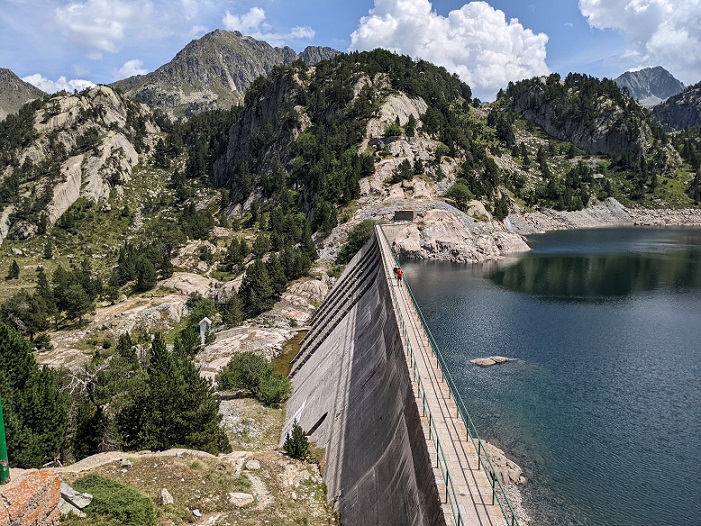
The recent heavy rain in Scotland reminded me that I had intended to write about what happens to the precipitation that does fall in the mountains of western Europe, how land-use and abuse has worsened the impact of reduced rainfall and how this helps explain why there were so few flowers during my traverse of the Pyrenees and in the Alps (see here).
The high Pyrenees, the central section of the mountain chain, is sprinkled with lakes, not unlike Scotland. Many of these are natural but others have been dammed for hydro or water. The water level behind the many dams I passed was without exception low but the situation in the Pyrenees appeared better than the rest of Spain where there have been water shortages for years and the levels of water in reservoirs dropped to record lows this summer.
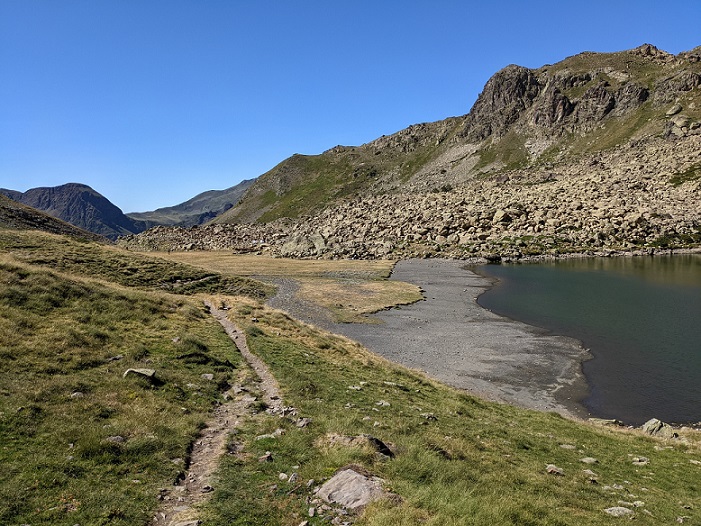
By contrast to the reservoirs, while the water level in some natural (unmodified) lakes was low, that was the exception rather than the rule.
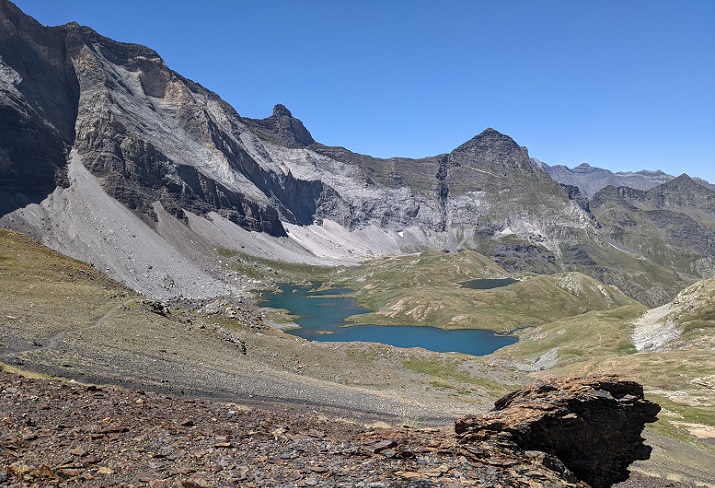
For most of the natural lakes I saw the amount of water flowing or falling into them still balances what is flowing out or being lost through evaporation and in some cases the land immediately round about them was still relatively green.
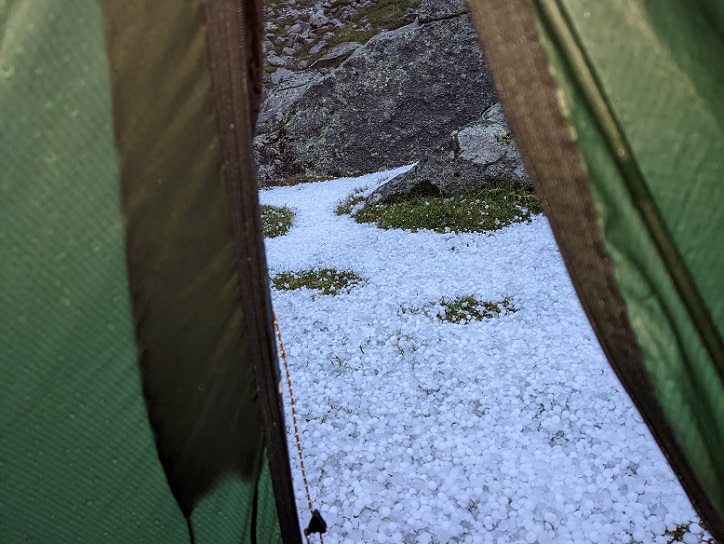
The explanation for this, I believe, is that while total rainfall may have been less than previous years, there is still plenty of precipitation in the central Pyrenees. Once I had left the Basque Country, where the French side of the Pyrenees was often blanketed in cloud and relatively damp, I witnessed thunderstorms on an almost daily basis. The drought was far from total.
The storms, however, were very localised and sometimes far away but several times I was caught out in them. This was an amazing experience but also quite scary not just because of the risk of lightening but the size of the hailstones and the force with which they struck. The storms developed very quickly, one could be swimming in a lake in the sun with hardly a cloud in the sky and an hour later enveloped in the maelstrom. Within minutes of the hail starting, the whole mountainside would be flowing with water. On a couple of occasions I ended up splashing through water over my ankles on what, 30 minutes previously, had been a dry and parched path. No mystery as to why most of the natural lakes were still full.
But what was also striking was how quickly this water disappeared. After sheltering in my tent till midday (photo above), I crossed three cols and found a place to camp at the Oulettes de Gaube, not far from a stream, as it was getting dark.
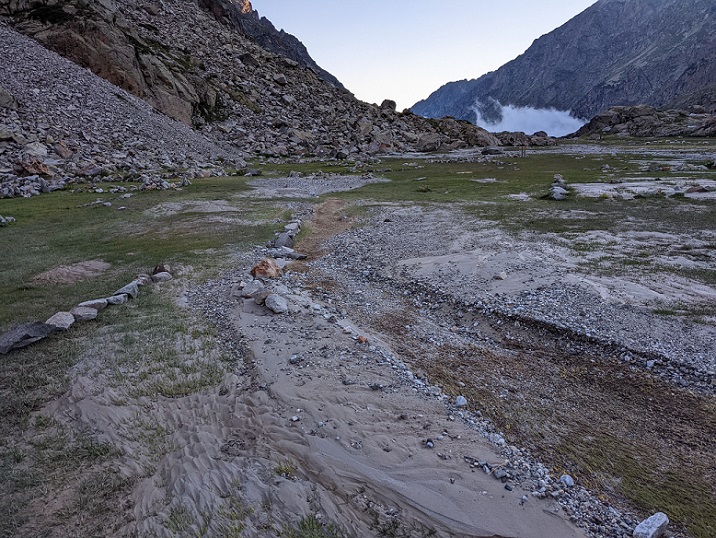
The next morning the stream close to my tent had gone but time enough for the water to sink into the flat ground which helped explain why the turf was as green as it was. In many places, however, the water was running straight off the hill before it could be absorbed by earth or vegetation leaving the ground parched.
While partly a matter of topography, there was plenty of evidence to show that vegetation played a crucial role in how much water was retained.
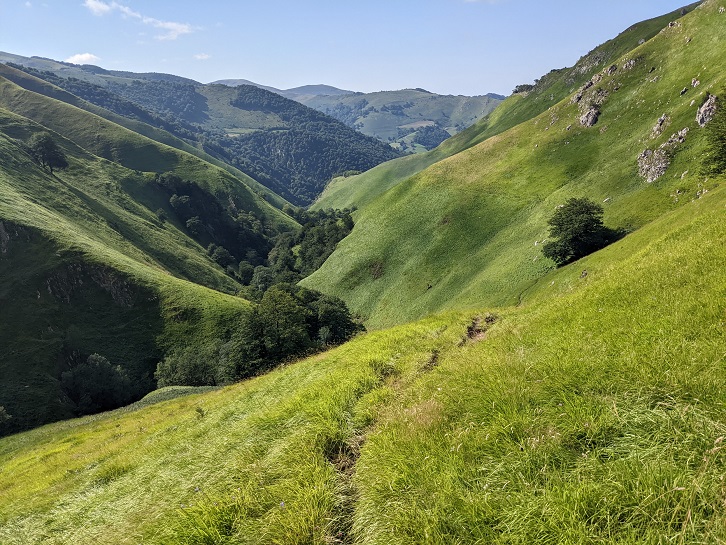
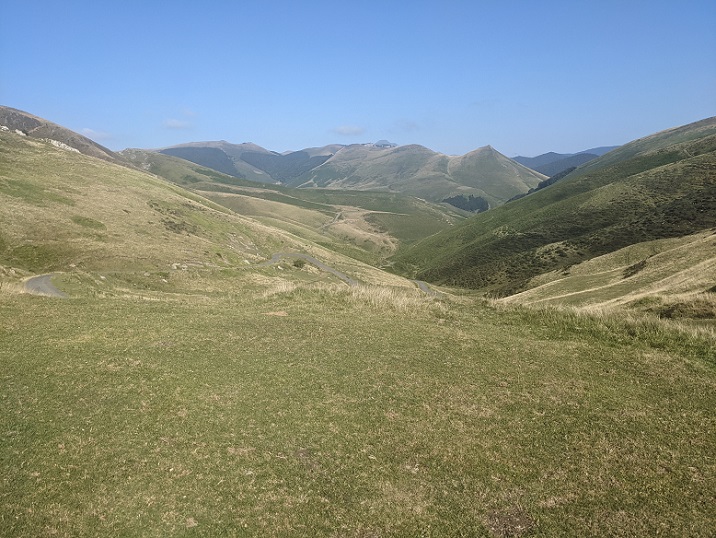
Most of the difference between the two photos comes down to grazing levels although the type of vegetation, itself in part determined by grazing, plays a part.
Indeed, from west to east, almost everywhere there were domestic animals grazing outside of forests the vegetation was cropped short promoting the rapid run-off of water
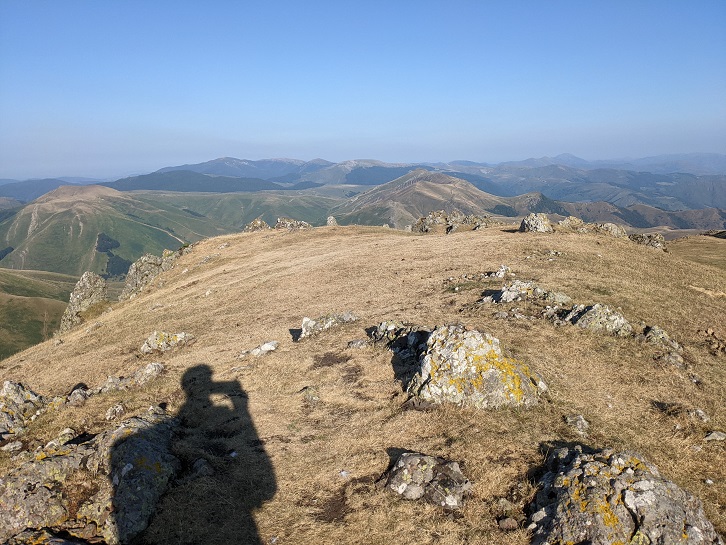
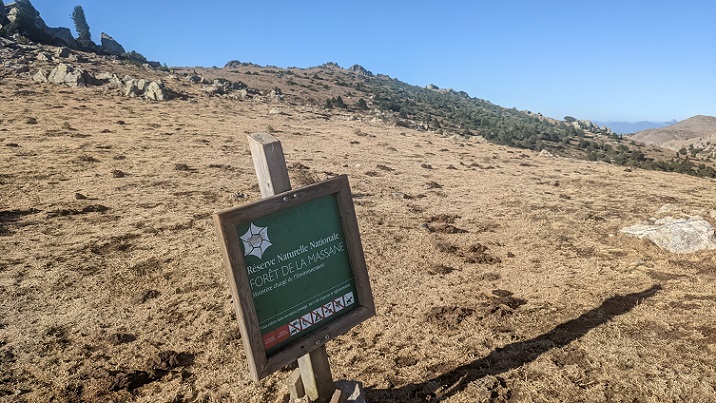
While the eastern end of the Pyrenees is naturally dryer in summer, which is reflected in a change to more drought resistant mediterranean vegetation, the level of grazing was creating bare hillsides from what might otherwise have been scrub.
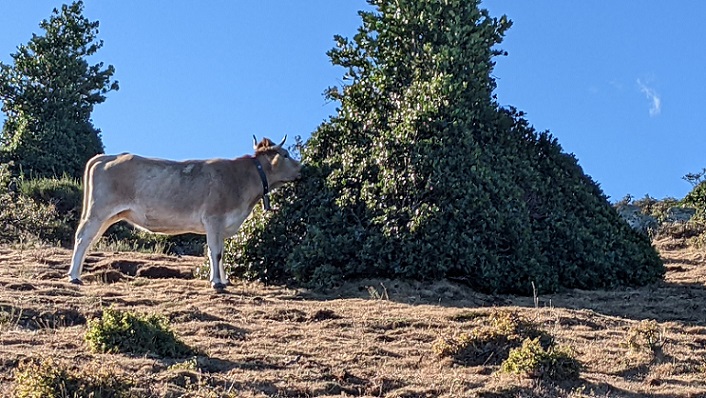
As anyone who has walked in the Pyrenees knows, you need to be very careful about drinking from the streams and lakes due to the number of domestic animals grazing: cows, sheep, horses and pigs (a herd of which surrounded my tent one night).
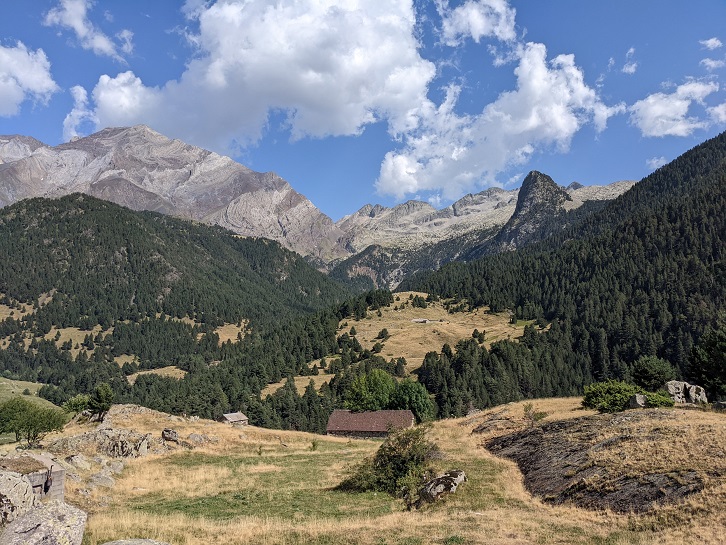
There has in the last fifty years or so been significant re-wilding in parts of Pyrenees as a result of settlements being abandoned, which has allowed forests to develop through natural processes. It looked to me, however, that in many places that has now been halted or reversed, with livestock farming returning but without the people.
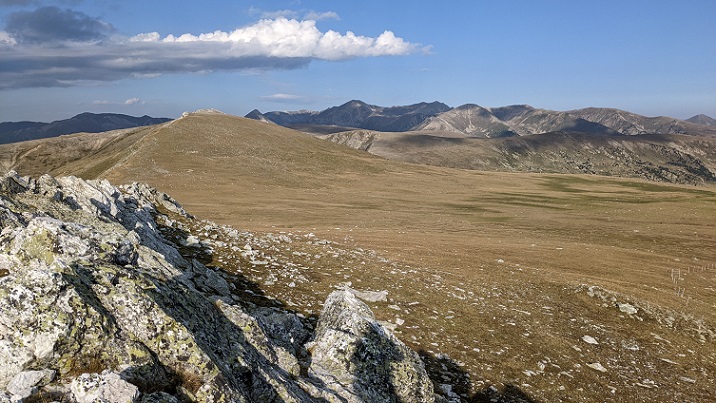
But it is not just domestic animals that are responsible for the bare hillsides. West of Eyne I came across chamois in herds of 20-30 animals, something I had not seen before. This appears to be unintended consequence of measures taken to protect the chamois. Without hunters or natural predators, it is now safe for chamois to graze on open hillsides rather than rocky slopes and it appeared to me they are starting to have an impact to red deer in Scotland.
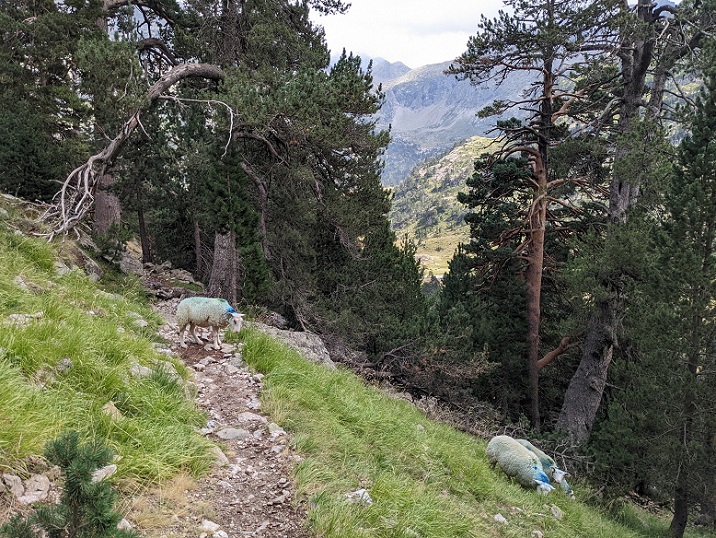
And, just as in Scotland, being in a National Park seems to have done little or nothing to protect valuable habitats from grazing domestic animals. The vegetation below the trees may look greener, in part because shaded by the trees which also help hold back water allowing it be absorbed into the ground, but there were no signs of young saplings, an ecological disaster in the making.
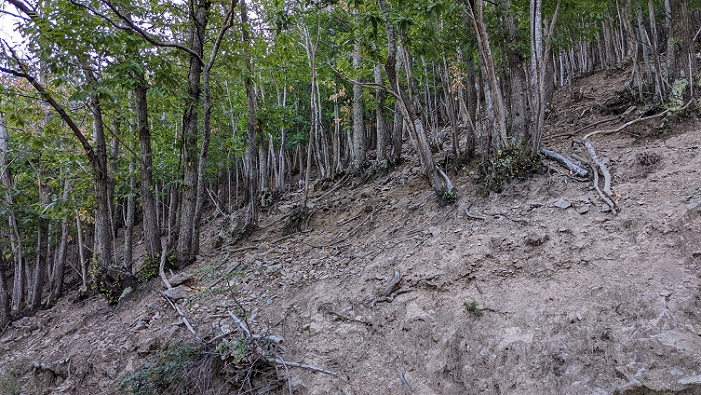
I came across this particularly shocking example of woodland being trashed, almost certainly by domestic pigs. When it does rain, what soil is left washes away. Woods and forests in Spain may be dying through lack of water but the impacts of climate change are being made far worse by the way in which they are being managed.
End thoughts
On my two previous visits to the Pyrenees I had been lucky to see them at their best, with amazing shows of flowers. I had also been stunned by the landscape and impressed by some successful andscape restoration, for example the slopes above Gavarnie which were bare 100 years ago but were then planted and allowed to re-wild to protect the village from avalanches. Because of that I think I was blind to the bigger picture. But travelling through the landscape day after day, the impacts of drought and overgrazing seemed to become ever more obvious, as were the parallels with what is happening in Scotland Scotland.
The primary impacts of the overgrazing in terms of climate change may be slightly different, in the Pyrenees it makes droughts worse whereas in Scotland it intensifies flooding – although the Pyrenees also suffers from damaging floods and Scotland from drought – but we are in the midst of an ecological disaster just the same. And sadly whether land is formally protected or not, whether as a National Park or some other designation, appears to make very little difference.
I will comment a bit more about that in a further post on overgrazing in the Vanoise National Park, in the French Alps, which I visited after the Pyrenees.

Spot on Nick. The NP well knows trees are the ideal green solution, in terms of flood risk management, habitats and species. There’s been no shortage of good advice coming from the river and fisheries scientists as well. But try telling that to the civil engineers coming with their steel piles and concrete and “town planners.” The fisheries have always been interested in the climate since the year dot, because it affects fish abundance and catches. I think there’s still the odd salmon runs the Asturias in Spain. They’re members of NASCO/North Atlantic Salmon Conservation Org. nasco.int which is based in Edinburgh. The previous secretary, Peter Hutchinson, lives in Helensburgh. (So, clearly, this is all an area where we are plagued with an abundance of idiots and clueless people.) I was just watching Potholer54 who’s great on the science along with his followers. But the problem has always been with the responses of the owners who are in power and control….the wrecking crew. https://www.youtube.com/watch?v=cpUe41EbHvQ